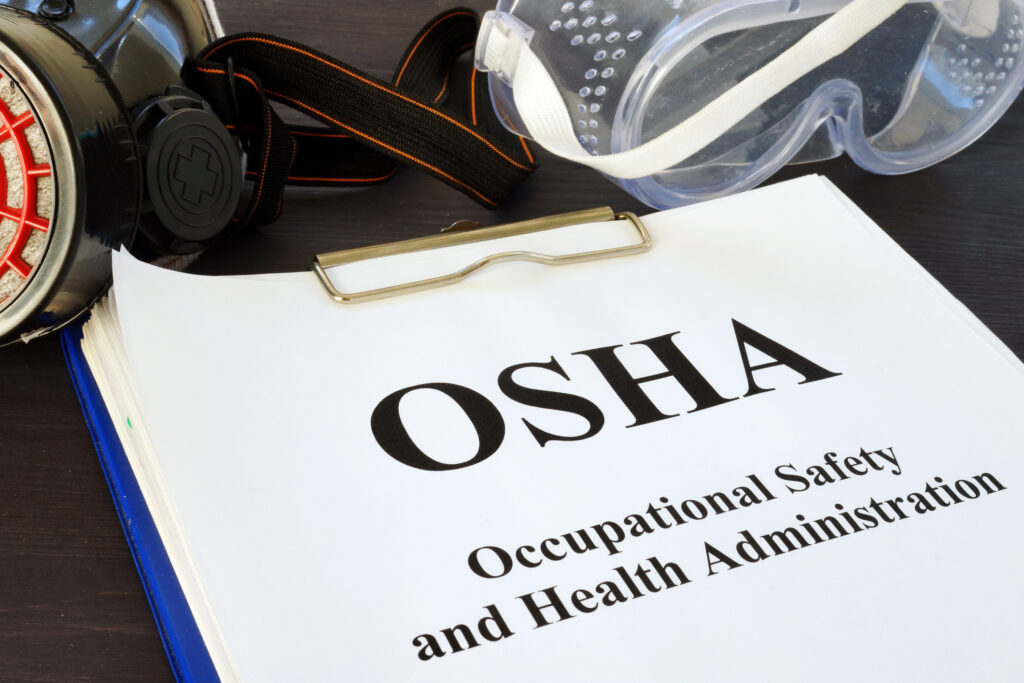Workplace safety is essential to employee well-being, organizational success, and regulatory compliance. When workers are protected from accidents, injuries, and harmful exposures, they can perform their jobs securely and efficiently. But true physical safety involves more than personal protective equipment (PPE) and work safety signs.
Creating an inclusive environment that prioritizes employee engagement and well-being plays a significant role in ensuring employees feel physically and psychologically safe. In fact, Gallup reports that companies with highly engaged employees have 64% fewer workplace accidents. This can be attributed to decreased absenteeism, increased collaboration, and clearer communication.
True security requires a comprehensive approach that includes training, monitoring, and continuous improvement. Below, we explore what physical safety entails, the reciprocal nature of employee engagement and workplace safety, and how to measure and improve it.
What is Physical Safety?

Physical safety includes the protection of employees from physical harm within the workplace, preventing accidents, injuries, and hazardous exposure. Workplaces across all sectors—whether in construction, healthcare, or office settings—must establish and maintain conditions that protect all employees. Key aspects of physical safety include accessible equipment, safe work practices, comprehensive safety training, and adherence to health and safety regulations.
However, physical safety goes beyond the more obvious aspects to include accessibility and protection from violence. Employees with disabilities should be granted accommodations to make work feasible and comfortable. This may include ramps, special pathways, or ergonomic chairs. Toxic workplaces must also be repaired to avoid workplace violence. For instance, in 2022, an employee at Precision Drawn Metals shot and killed his coworker, claiming he was bullied at work. While this example is extreme, toxic workplace cultures are marked by an increase in bullying and harassment, which can be physical or verbal.
Why is Workplace Safety Important?
As illustrated above, the importance of workplace safety goes far beyond compliance. According to the Occupational Safety and Health Administration (OSHA), millions of workers are injured each year, leading to lost productivity, increased costs, and personal suffering. Ensuring safety at work not only protects employees but also boosts morale and productivity. Workers feel more confident and comfortable when they know their well-being is prioritized, which contributes to job satisfaction and overall organizational performance. Companies that take a proactive approach to safety avoid costly penalties from regulatory agencies, reduce the risk of lawsuits, and enhance their reputation as safe and supportive employers.
Employee engagement and workplace safety go hand in hand. Engaged employees are more attentive, motivated, and proactive, which improves their adherence to safety protocols and reduces the likelihood of accidents. When employees feel connected and invested in their work, they are more likely to notice potential hazards and collaborate with their peers to maintain a secure environment. At the same time, when an organization prioritizes workplace safety, it fosters a sense of care and respect that enhances employee trust and engagement. Knowing that their employer values their health and safety makes employees feel appreciated and supported, boosting morale and encouraging active participation in workplace initiatives. This mutually reinforcing cycle creates a safer, more productive workplace where employees feel both physically safe and valued.

Measuring Physical Safety in the Workplace
To create a safe workplace, organizations need to continuously monitor and measure safety practices. Key performance indicators (KPIs) and safety metrics help organizations assess their safety efforts and make necessary improvements.
- Incident Rates: Monitoring the number of incidents, including near misses, accidents, and injuries, helps identify trends in workplace hazards. Low incident rates indicate strong safety performance.
- Training Completion Rates: Workplace safety training is crucial for educating employees on safe practices and hazard identification. Tracking training completion rates ensures employees are prepared to work safely.
- Audit Scores: Conducting regular safety audits checks for compliance with policies and regulations. High audit scores reflect strong safety standards and highlight areas for improvement.
- Safety Observations: Safety observations allow managers to monitor behaviors and identify potential risks. Encouraging employees to report unsafe conditions can prevent accidents and support a culture of safety. Make sure to include an anonymous forum for reporting.
- Employee Feedback: Gathering employee feedback through surveys or focus groups offers insights into workers’ perceptions of safety and inclusion. If employees feel physically unsafe or face discrimination, it’s essential to address these issues immediately.
These metrics offer a systematic approach to evaluating physical safety, enabling organizations to make meaningful changes to their safety policies.
How to Increase Physical Safety
Increasing physical safety requires a proactive approach. Here are some workplace health and safety tips that incorporate key inclusion and accessibility principles:
- Implement Regular Training: Ongoing workplace safety training prepares employees to recognize and mitigate risks. Training should address the specific needs of diverse job roles and should be regularly updated. Importantly, safety training must be inclusive, offering considerations for employees with disabilities and language differences.
- Establish Clear Protocols and Signage: Work safety signs and labels should be prominently displayed, particularly in high-risk areas, and should be accessible to everyone, including those with visual or mobility impairments. Use accessible fonts, clear graphics, and ensure signage is positioned at heights that accommodate people in wheelchairs. Clear communication about safety protocols fosters an inclusive and equitable workplace where everyone understands workplace rules.
- Invest in Inclusive and Accessible Safety Equipment: Providing suitable personal protective equipment (PPE) and tools ensures that all employees can safely perform their tasks. Regular maintenance and inspection of equipment are also necessary. For employees with disabilities, accessible equipment should be provided to accommodate their needs and prevent injuries.
- Conduct Routine Safety Inspections and Audits: Regular inspections and audits identify unsafe conditions and allow organizations to address them before accidents occur.
- Cultivate an Inclusive Culture: A safe workplace values and respects all employees, creating an environment where they feel comfortable reporting unsafe conditions or harassment without fear of retaliation. Organizations can foster this by establishing zero-tolerance policies and encouraging open communication.
The Connection Between Physical and Psychological Safety

Physical and psychological safety are strongly interconnected. Physical safety ensures that employees are safe from accidents and injuries, while psychological safety creates an environment where employees feel safe to express their concerns and ideas without fear of judgment. In inclusive workplaces, psychological safety can reduce the likelihood of incidents by fostering open discussions about potential hazards and empowering employees to report unsafe conditions without hesitation.
A study published in the Journal of Occupational Health Psychology found that psychological safety significantly contributes to physical safety, encouraging teamwork and transparency in addressing workplace risks. Creating an inclusive, psychologically safe environment where every employee feels respected helps reinforce a proactive approach to physical safety.
Ensuring workplace safety involves not only physical measures but also a commitment to overall well-being. By fostering an inclusive and accessible environment, organizations can ensure that all employees feel safe, valued, and empowered to contribute to workplace health and safety initiatives. When companies prioritize the well-being of all employees, they create a culture of safety that benefits everyone.
Kaela Sosa is co-founder and Manager, Curriculum and Programming at The Diversity Movement. Her expertise includes psychology, gender identity and sexual orientation and racial identities. Kaela has written and spoken about a range of topics: active allyship, the inclusive talent lifecycle, disability etiquette, LGBTQ+ inclusion and inclusive language. At The Diversity Movement, she leads the development and execution of learning programs, including digital learning, online courses, certificate programs and certification opportunities. Connect with or follow Kaela on Linkedin to learn more.




